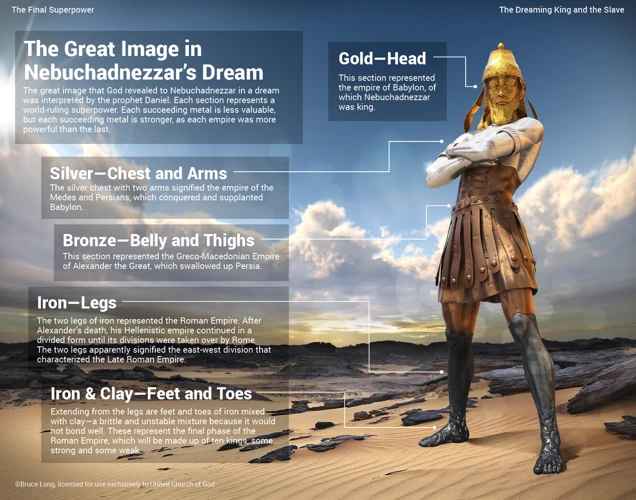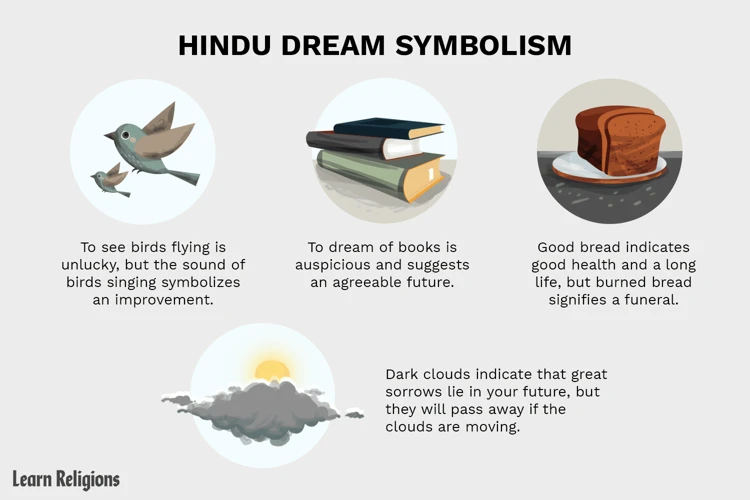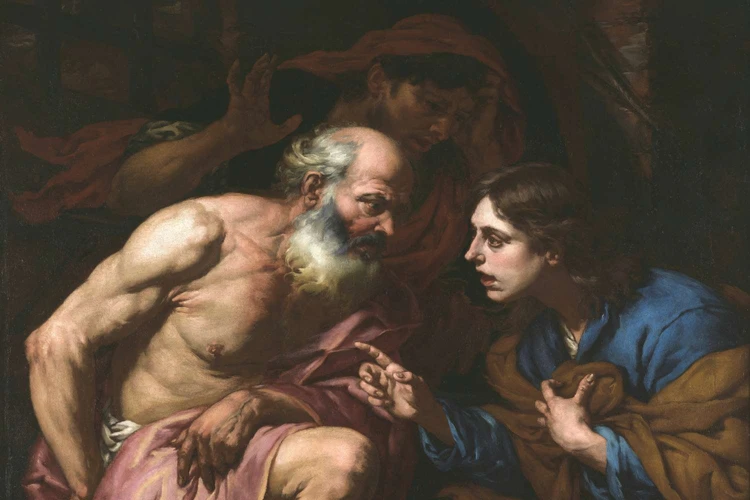The enigmatic and captivating dream of Nebuchadnezzar, the ancient Babylonian king, has puzzled scholars and theologians for centuries. With its cryptic symbols and divine messages, this dream holds a profound significance that extends beyond its historical context. In this article, we will delve into the intricate meaning behind Nebuchadnezzar’s dream, deciphering its symbols and decoding its theological and symbolic significance. We will also explore the comparisons to other biblical dreams, the mysteries and controversies surrounding its interpretation, and finally, the lasting historical impact and cultural references this dream has inspired. Prepare to unravel the mysteries of Nebuchadnezzar’s dream and uncover the hidden truths within.
Background of Nebuchadnezzar’s Dream

Nebuchadnezzar II, the ruler of Babylon from 605 BCE to 562 BCE, was a powerful and ambitious king known for his military conquests and architectural achievements. During his reign, the Babylonian Empire reached its zenith, encompassing vast territories in Mesopotamia and beyond. Nebuchadnezzar’s dream is believed to have occurred in the second year of his reign and held great significance in shaping his rule and the destiny of his empire.
Nebuchadnezzar’s dream was not an ordinary or mundane experience. It haunted the king’s thoughts and troubled his spirit. The dream was vivid, with disturbing images that left Nebuchadnezzar perplexed and anxious. The dream depicted a colossal statue with various body parts made of different precious metals, symbolizing different kingdoms and rulers. This striking imagery, coupled with the mysterious interpretation, compelled Nebuchadnezzar to seek answers and understanding. Little did he know that the meaning of this dream would hold significant implications for his reign and the course of history.
Historical Context of Nebuchadnezzar
Nebuchadnezzar’s dream occurred during a crucial period in ancient history when Babylon was at the pinnacle of its power. Nebuchadnezzar inherited a kingdom that had undergone a transformation under the rule of his father, Nabopolassar. It was during his reign that Babylon emerged as a dominant force in the region, conquering and subjugating several neighboring kingdoms, including Judah and Jerusalem. Nebuchadnezzar’s dream not only affected him personally but had wider implications for the destiny of the Babylonian Empire. The dream served as a divine message that would shape his reign and the fortunes of his empire, forever leaving an indelible mark on the pages of history.
The Dream’s Disturbing Elements
The dream that Nebuchadnezzar experienced was filled with disturbing elements that unsettled him to the core. The striking imagery of the colossal statue, with its different body parts made of various precious metals, left the king perplexed. The sight of the head made of fine gold, the chest and arms of silver, the belly and thighs of bronze, the legs of iron, and the feet partly of iron and partly of clay raised numerous questions for Nebuchadnezzar. The presence of these unconventional materials and the symbolism behind them stirred a sense of unease within the king. The dream’s enigmatic nature and the anticipation of its interpretation increased Nebuchadnezzar’s curiosity and anxiety, prompting him to seek answers from those who possessed the ability to decipher its deep meaning.
Interpreting the Symbols

To unravel the meaning behind Nebuchadnezzar’s dream, one must delve deep into the symbolism embedded within the dream’s elements. The dream featured a statue comprised of various components, each representing a different kingdom. Here is a breakdown of the symbols:
1. Head of Gold: The head of the statue represented Nebuchadnezzar’s own empire, Babylon, symbolizing its power and supreme reign.
2. Chest and Arms of Silver: The silver components represented the Medo-Persian Empire, which would succeed Babylon and assume dominion over the region.
3. Belly and Thighs of Bronze: The bronze symbolized the empire of Greece, led by Alexander the Great and renowned for its military might and cultural influence.
4. Legs of Iron: The iron legs symbolized the mighty Roman Empire, which would rise to prominence and establish its dominance over vast territories.
5. Feet of Iron Mixed with Clay: The feet represented a divided and fragmented empire, with the mixture of iron and clay symbolizing a fragile and unstable kingdom.
The interpretation of these symbols played a significant role in understanding the divine message conveyed in Nebuchadnezzar’s dream, hinting at the rise and fall of powerful empires throughout history.
The Statue and Its Components
The statue and its components in Nebuchadnezzar’s dream hold symbolic significance that unveils the rise and fall of empires. The statue, as described in the dream, had different body parts made of various precious metals. The head was made of gold, representing the Babylonian Empire, symbolizing its power, wealth, and sovereignty. Following the head, there was a chest and arms made of silver, representing the subsequent empire to rise after Babylon. The belly and thighs were made of bronze, signifying the next empire in line. Finally, the legs were made of iron, representing yet another dominion. The feet of the statue were a mixture of iron and clay, signifying a divided and weakened kingdom. Each metal component of the statue represents a different era of imperial power, with the dream unfolding a series of empires that would rise and eventually succumb to the passage of time. The symbolic imagery of the statue offers profound insights into the cyclical nature of power and the eventual downfall of even the mightiest empires.
The Rock and Its Impact
In Nebuchadnezzar’s dream, the rock plays a pivotal role in the narrative, representing a powerful force that brings about a momentous impact. The rock, which is not made by human hands, represents a divine intervention that shatters the statue and reduces it to dust. This imagery implies the destruction and ultimate downfall of the empires and rulers symbolized by the different metals of the statue. The impact of the rock signifies a shift in power and a divine intervention in the affairs of human kingdoms. It highlights the ephemeral nature of earthly dominance and the superior authority of the divine realm. The rock’s impact in the dream underscores the message that no human empire or ruler is everlasting, and that the ultimate sovereignty resides with the divine.
Theological and Symbolic Significance

The theological and symbolic significance behind Nebuchadnezzar’s dream is profound, offering deep insights into divine messages and prophecies. The dream’s interpretation reveals a divine plan that transcends human understanding and highlights the ultimate sovereignty of God. The statue in the dream represents a succession of empires, starting with Nebuchadnezzar’s Babylonian Empire and culminating in a future kingdom established by God. Each metal component of the statue symbolizes a different empire, illustrating the rise and fall of earthly powers in the grand scheme of God’s plan. The dream’s message ultimately emphasizes the temporary nature of human kingdoms and the everlasting dominion of God’s kingdom. The rock, which destroys the statue and fills the earth, represents this divine kingdom and the remarkable impact it will have on the world. This symbolic portrayal serves as a reminder of God’s ultimate authority and the fulfillment of His divine purposes.
Divine Messages and Prophecies
The dream of Nebuchadnezzar carried profound divine messages and prophecies that held great significance. As interpreted by the prophet Daniel, the dream signaled the rise and fall of empires throughout history. Each component of the colossal statue represented a different kingdom, starting with Nebuchadnezzar’s own Babylonian Empire and extending to future empires like the Persian, Greek, and Roman. The dream also foretold the eventual establishment of an everlasting kingdom, represented by a rock that crushed the statue and grew into a mountain. This divine message conveyed the impermanence of earthly kingdoms and the ultimate triumph of God’s everlasting kingdom. The dream’s prophecies stirred a sense of awe and mystery, inviting contemplation on the grand scheme of history and the role of human rulers in God’s plan.
Relevance to Ancient Babylonian Beliefs
The dream of Nebuchadnezzar carries immense relevance to the ancient Babylonian beliefs and practices. In Babylonian culture, dreams were considered to be divine messages from the gods, carrying significant omens and prophecies. Dream interpretation held a central role in their religious and political system, with special priests known as “dream interpreters” tasked with deciphering these messages. The dream’s symbolism and the subsequent interpretation by Daniel, a Jewish captive in Babylon, would have resonated with Nebuchadnezzar’s belief in the interconnectedness of gods and dreams. The dream served as a reminder of the power and influence of the gods over human affairs, reaffirming the divine authority and legitimacy of Nebuchadnezzar’s rule. The dream’s relevance to ancient Babylonian beliefs underscores the deep intertwining of religion, politics, and prophecy in the Babylonian Empire.
Comparisons to Other Biblical Dreams

Comparisons to other biblical dreams provide valuable insights into the significance and interpretation of Nebuchadnezzar’s dream. One prominent example is Joseph’s dream in the book of Genesis. Joseph dreamed of sheaves of wheat bowing down to his sheaf, symbolizing his future rise to power and authority. Similarly, Nebuchadnezzar’s dream revealed the rise and fall of kingdoms and rulers. Another parallel can be drawn to Daniel, who possessed the gift of interpreting dreams. Daniel’s interpretation of Nebuchadnezzar’s dream showcases his divine wisdom and ability to discern the future. These comparisons highlight the recurring theme of dreams as conduits of divine communication and prophecy in biblical texts. Despite their distinct symbols and contexts, these dreams share a common thread of conveying divine messages and shaping the destinies of individuals and nations.
Joseph’s Dream in Genesis
Joseph’s dream in Genesis is a captivating biblical account that showcases the power and divine intervention in prophetic dreams. In this dream, Joseph witnessed himself and his brothers binding sheaves in a field. However, in a remarkable turn of events, Joseph’s sheaf stood upright while his brothers’ sheaves bowed down to it. This dream perplexed Joseph, leaving him uncertain about its meaning and its implications for his future. Little did he know that this dream was a foreshadowing of his rise to power and authority in Egypt. Joseph’s dream ultimately played a pivotal role in his journey from being a favored son to becoming a prominent figure in Egyptian society. This biblical narrative serves as a parallel to Nebuchadnezzar’s dream, highlighting the significance of divine messages conveyed through dreams in shaping the lives of individuals and the course of history.
Daniel’s Interpretation of Dreams
Daniel, a wise and insightful figure in ancient history, played a crucial role in interpreting dreams, including Nebuchadnezzar’s. Known for his ability to unravel the mysterious symbols and divine messages hidden within dreams, Daniel gained prominence and earned favor with Nebuchadnezzar. In his interpretation of dreams, Daniel attributed the different components of the statue in Nebuchadnezzar’s dream to represent different empires and kingdoms that would rise and fall throughout history. His interpretation revealed the divine message that Nebuchadnezzar’s kingdom was only temporary and that a greater kingdom, represented by the stone, would ultimately triumph and establish an everlasting reign. Daniel’s remarkable ability to interpret dreams showcased his wisdom and established him as a trusted advisor to Nebuchadnezzar, leaving a lasting impact on biblical history.
Mysteries and Controversies

The interpretation of Nebuchadnezzar’s dream has been a source of ongoing mysteries and controversies among scholars and theologians. One of the main debates revolves around the identity of the kingdoms represented by the different metals in the statue. While there is general consensus that the gold head represents Nebuchadnezzar’s own Babylonian Empire, opinions diverge regarding the subsequent kingdoms symbolized by the silver, bronze, iron, and clay. Some propose that these represent the Medo-Persian Empire, the Greek Empire under Alexander the Great, and the Roman Empire, respectively. However, alternative theories suggest other interpretations, adding layers of uncertainty to an already enigmatic dream. Scholars continue to grapple with the exact theological implications and prophetic nature of Nebuchadnezzar’s dream, fueling further discussion and speculation. The mysteries surrounding this dream serve as a constant reminder of its enduring and perplexing nature.
Debates Among Scholars
Scholars and experts have engaged in passionate debates and discussions regarding the interpretation of Nebuchadnezzar’s dream. While there are some points of consensus, there are also varying perspectives on specific aspects of the dream’s symbolism and meaning. One of the key areas of debate centers around the identification of the different kingdoms represented by the statue’s various parts. Some scholars argue that the golden head represents Nebuchadnezzar’s own Babylonian Empire, while others propose alternate theories, such as it representing the Medo-Persian Empire. Additionally, the exact identity of the subsequent kingdoms represented by the silver, bronze, iron, and clay remains a point of contention. Scholars differ in their understanding of the significance of the rock that smashes the statue and becomes a great mountain. While some interpret it as a representation of the rise of the kingdom of God, others propose alternative theories, such as it symbolizing a specific historical event or a future apocalypse. These ongoing debates among scholars highlight the complexity and intriguing nature of Nebuchadnezzar’s dream, leaving room for continued exploration and interpretation.
Alternative Proposals for Interpretation
Alternative scholars and theologians have put forth various proposals and interpretations regarding Nebuchadnezzar’s dream. These alternative perspectives offer fresh insights and challenge traditional understandings. One proposal suggests that the different components of the statue represent not only different kingdoms but also different historical periods. Another interpretation posits that the rock represents an earthly kingdom that will arise and overthrow the oppressive rulers depicted in the dream. Some scholars suggest that the dream is a symbolic representation of the cycles of power and downfall within empires throughout history. It is important to consider these alternative proposals as they offer alternative perspectives to expand our understanding of the profound message conveyed in Nebuchadnezzar’s dream.
Historical Impact and Cultural References
The historical impact of Nebuchadnezzar’s dream extends far beyond the boundaries of ancient Babylon. The prophetic nature of the dream, along with its interpretation, carries immense religious and cultural significance. The dream’s portrayal of a succession of kingdoms being crushed by a divine rock foreshadowed the rise and fall of empires throughout history. This imagery has been referenced and alluded to in various religious texts, literature, and artwork over the centuries. Its messages of divine providence, the futility of human power, and the ultimate triumph of righteousness have resonated with audiences across different cultures and time periods. From biblical interpretations to Renaissance art, Nebuchadnezzar’s dream continues to be a source of inspiration and contemplation, exploring themes of power, mortality, and spirituality. Its enduring influence on religious thought signifies its profound impact on human perceptions of the divine and the course of human history.
Legacy in Art and Literature
The dream of Nebuchadnezzar has had a profound impact on art and literature throughout history. Artists and writers have been captivated by the powerful imagery and symbolic richness of the dream, incorporating its elements into their works. From paintings to sculptures to epic poems, Nebuchadnezzar’s dream has served as a source of inspiration for countless creative minds. The grandeur of the statue, the mysterious rock, and the divine messages conveyed in the dream have been depicted in various forms, allowing audiences to contemplate the complexities of power, destiny, and divine intervention. This legacy in art and literature ensures that Nebuchadnezzar’s dream continues to be celebrated and explored, keeping its enigmatic message alive for generations to come.
Influence on Religious Thought
The dream of Nebuchadnezzar has had a profound influence on religious thought throughout history. Its interpretation and symbolism have been discussed and debated by theologians, scholars, and believers, inspiring varied theological perspectives. The concept of divine messages and prophecy conveyed through dreams has been further explored in religious traditions. In Christianity, the dream is seen as a foreshadowing of the coming of Christ and the establishment of God’s kingdom. In Judaism, the dream is associated with the concept of redemption and the ultimate triumph of righteousness. The dream’s themes of power, succession, and divine intervention have resonated with religious thinkers, shaping their beliefs and interpretations of God’s guidance in human affairs. The lasting impact of Nebuchadnezzar’s dream on religious thought continues to shape theological discourse and inspire spiritual contemplation.
Conclusion
In conclusion, Nebuchadnezzar’s dream is a complex and enigmatic message from the divine realm. Its symbolism and prophetic nature have fascinated scholars and theologians throughout history. The dream’s interpretation holds deep theological and symbolic significance, reflecting the rise and fall of kingdoms and conveying messages of divine judgment and sovereignty. The comparisons to other biblical dreams, such as Joseph’s dream and Daniel’s interpretation, highlight the thread of divine revelation woven throughout scripture. While debates and alternative proposals for interpretation exist, the profound impact of Nebuchadnezzar’s dream cannot be denied. Its influence extends beyond the pages of history, leaving a lasting legacy in art, literature, and religious thought. The mysteries surrounding this dream will continue to captivate and perplex those who seek to unravel its hidden truths, reminding us of the complexities of human existence and the wonder of divine communication.
Frequently Asked Questions
1. What was the historical context of Nebuchadnezzar’s reign?
Nebuchadnezzar’s reign occurred during the height of the Neo-Babylonian Empire, which was known for its military strength and cultural achievements. He ruled over a vast empire that encompassed Mesopotamia and reached far into Egypt and beyond.
2. Why did Nebuchadnezzar’s dream trouble him?
Nebuchadnezzar’s dream troubled him because it was filled with cryptic symbols and divine messages that he couldn’t decipher. He was desperate to understand the meaning of the dream and sought the interpretation from wise men and seers.
3. What did the statue in Nebuchadnezzar’s dream represent?
The statue in Nebuchadnezzar’s dream represented a succession of empires, starting with Nebuchadnezzar’s own Babylonian Empire, followed by the Medo-Persian Empire, the Greek Empire under Alexander the Great, and the Roman Empire.
4. How did the rock impact the statue in the dream?
In Nebuchadnezzar’s dream, a rock struck the statue on its feet, causing it to crumble and disintegrate. This symbolized the downfall and ultimate destruction of the successive empires and represented the establishment of God’s everlasting kingdom.
5. What were some of the divine messages and prophecies in Nebuchadnezzar’s dream?
The divine messages in Nebuchadnezzar’s dream included the rise and fall of powerful empires, the establishment of God’s eternal kingdom, and the importance of recognizing the sovereignty and authority of God.
6. How did Nebuchadnezzar’s dream relate to ancient Babylonian beliefs?
Nebuchadnezzar’s dream incorporated elements of Babylonian mythology and beliefs, such as the significance of dreams as divine messages and the idea of powerful empires rising and falling. However, the dream also introduced a monotheistic perspective, emphasizing the ultimate sovereignty of a single God.
7. How does Nebuchadnezzar’s dream compare to Joseph’s dream in Genesis?
While both dreams contained symbolic imagery and divine messages, Joseph’s dream in Genesis was more personal and focused on his own future. Nebuchadnezzar’s dream, on the other hand, had broader political and historical implications.
8. Was Daniel the only one who could interpret dreams in the Bible?
Daniel was known for his ability to interpret dreams, but he was not the only one in the Bible with this skill. Other individuals like Joseph and the prophet Samuel also had the divine gift of interpreting dreams.
9. What are some alternative proposals for interpreting Nebuchadnezzar’s dream?
Some alternative proposals for interpreting Nebuchadnezzar’s dream suggest that the succession of empires represented different historical periods rather than specific kingdoms or that the dream had a purely symbolic or allegorical meaning.
10. How did Nebuchadnezzar’s dream influence art and literature?
Nebuchadnezzar’s dream has inspired numerous artistic representations and literary works throughout history. Paintings, sculptures, and literary adaptations showcase the powerful imagery of the dream and its theological implications.


